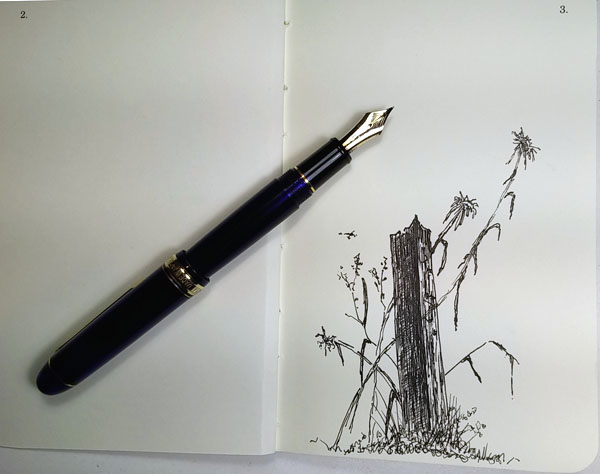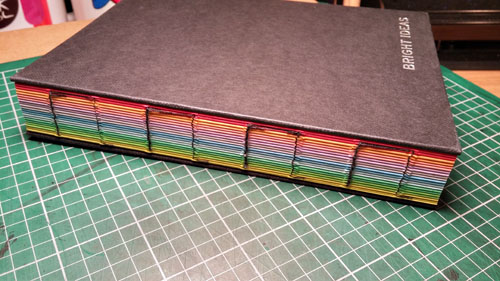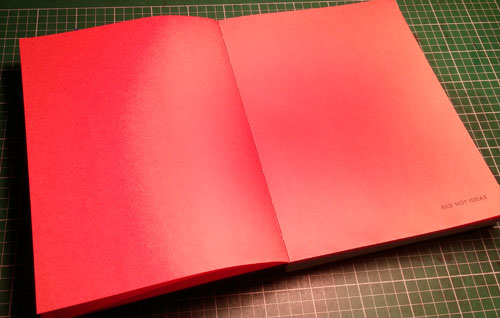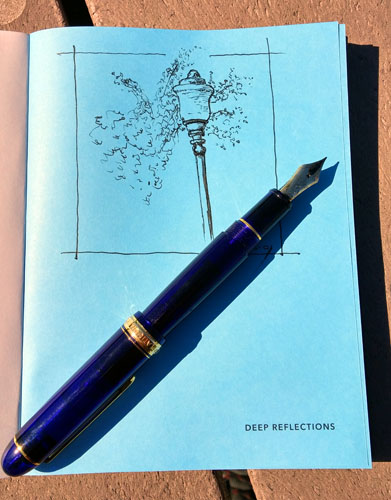Sarcastic sports nut standing behind a sketcher: “How far can you throw your book?”
Sketcher responds: “That depends on how bad the paper is.”
I’m here to report that I could throw my Clairefontaine sketchbook pretty darn far right now. Given that I’m old and likely to pull a muscle if I tried, I just slammed it shut and put it on a shelf.
When I started sketching I seemed to be buying a new sketchbook every week, searching for the right format, the right binding, and the right paper. It’s a problem for beginners because we don’t have the skills to modify our approach to suit the paper and don’t know how to evaluate whether it’s “us” or “the book.” Most of all, though, back then we didn’t have good choices.
Then Stillman & Birn released the Alpha series sketchbooks and my life changed. I filled one, then another, and another. I started buying them 3-4 at a time. Later they released the Beta series, which quickly became my favorite. Things got confusing for me only when they started releasing a bunch of different sizes. Nevertheless, I didn’t worry about paper quality.
But recently I had only one Beta series 8×10 softcover book available and these are my “go to” street sketching book. But with COVID lockdowns and such, I can’t do much street sketching these days, so while at the student-run coop associated with the art school here, I bought a Clairefontane sketchbook. It seemed nice enough, but that was deceptive. Contained within its covers was a pile of paper where one side was “ok” when exposed to water, the other side was less so. Neither were very good, at least when water was involved.
I struggled with it and had done about a dozen sketches in it, all on the “front” side of the paper. But yesterday I tried painting on the back side of one of the sheets (two of them had already fallen out of the book) and what a mess. For what it’s worth, others have reported problems with this sketchbook too. Here’s the results of my sketch.
 These are part of our tomato crop this year and no, the tomatoes are not that red. My sketch got that way as the paper started pilling when I simply applied a bit of water to get my initial wash to flow. And every time I put paint to paper, there was more pilling. I chased it by letting it dry and adding more paint. Each time I had to go a bit darker to cover spots that formed as a result. It’s just impossible to work with crappy paper. The surface of this sketch feels like 80-grit sandpaper from all the pilling.
These are part of our tomato crop this year and no, the tomatoes are not that red. My sketch got that way as the paper started pilling when I simply applied a bit of water to get my initial wash to flow. And every time I put paint to paper, there was more pilling. I chased it by letting it dry and adding more paint. Each time I had to go a bit darker to cover spots that formed as a result. It’s just impossible to work with crappy paper. The surface of this sketch feels like 80-grit sandpaper from all the pilling.
Artists constantly plead with students to use good paper. Students constantly say they don’t want to use good paper because they’re “just getting started.” I say throw the crappy stuff away and buy good paper. Use cheap paint, cheap brushes, cheap paper towels if you must, but don’t use crappy paper. BTW, this sketchbook cost me $20 so money isn’t always the object here. For the same money, though, I could have bought a good, Stillman & Birn sketchbook, but the coop doesn’t stock them.
Today, though, I wanted to redeem myself and grabbed my one blank S&B Beta sketchbook off the shelf and set up three tomatoes to draw. This was soooooo much more fun. Just for kicks I grabbed a cheap box of Munyo watercolors, a $4 Princeton synthetic brush and a napkin left over from a Subway sandwich from the day before. That’s what I used… with good paper. I was stuck with the same limited skill set I had the day before but the enjoyment and, I think, the results were much better. I’ll let you decide.

















